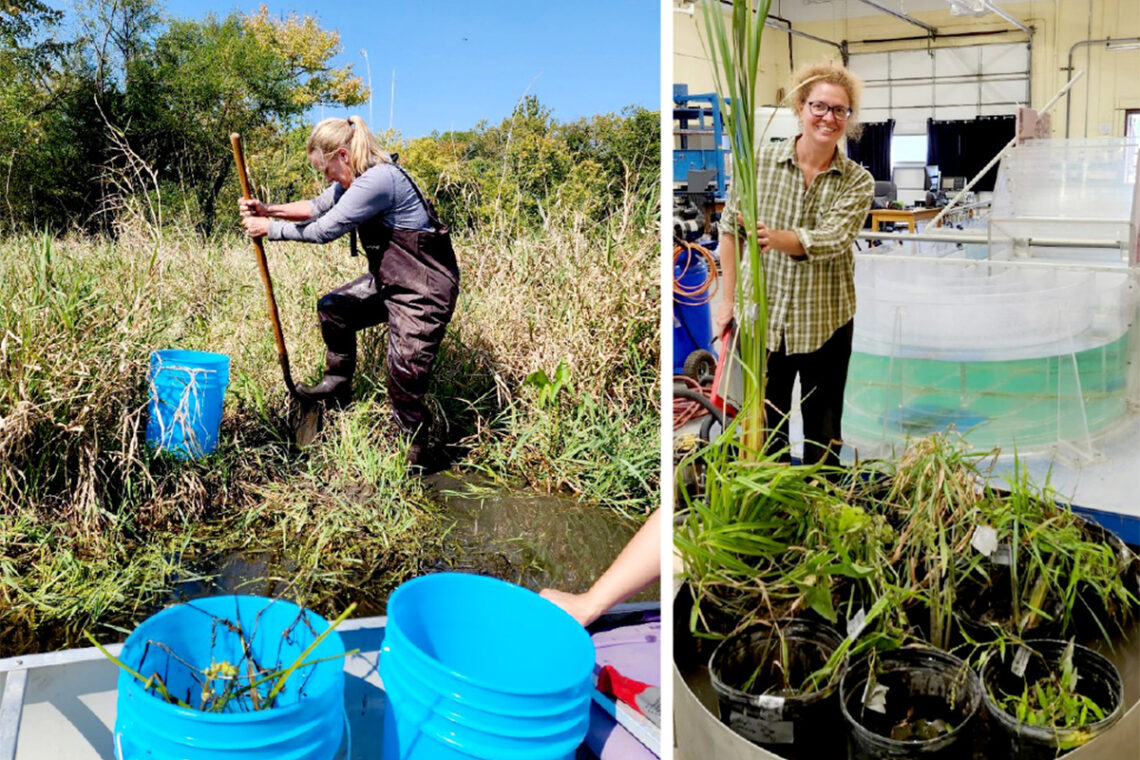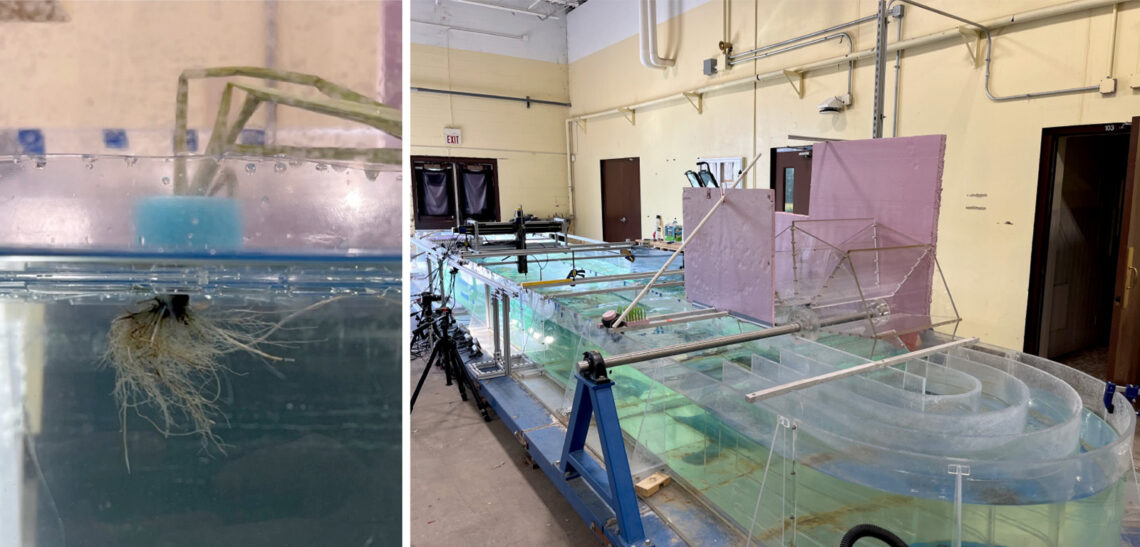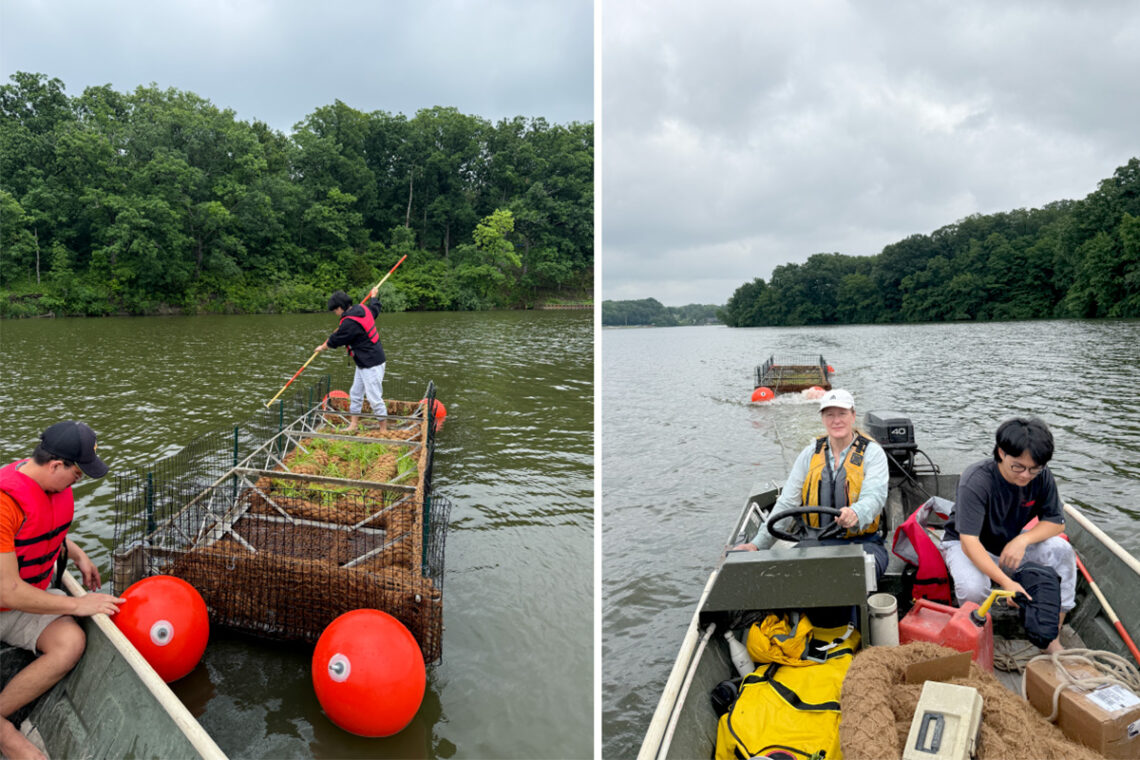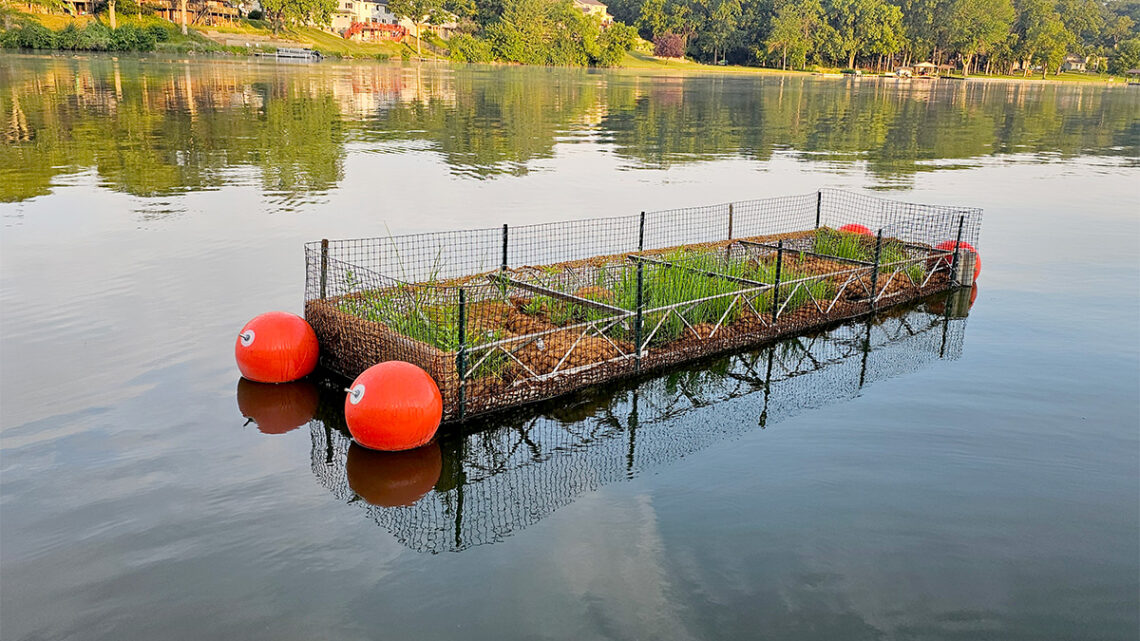After more than a year of planning, our team is finally ready to launch a new phase of research. We've designed and built two small "islands" of wetland plants that will float on Lake Decatur. These living laboratories will help us investigate how floating wetlands may affect nutrient levels and sediment dynamics in lake systems nationwide.
Our wetland raft structures are steel cages with thick coils of natural coconut fiber, known as coir, that will hold the plants in place. At the dock, we begin planting rows of nine native plant species in the coir. The placement of each plant species is carefully planned, not random. Last year, in September, we harvested plants from nearby wetlands and tested them in the Ecohydraulics and Ecomorphodynamics Laboratory at the U. of I. to evaluate whether their roots could withstand the flow of water and how they might affect the lake bottom sediment.

Our findings in the lab guide our planting strategy today. Species are arranged to maximize root protection from higher flow conditions and organized in row plots to help us identify each species in future studies.

Once the plants are tucked into the coir logs, we attach bright orange buoys to the frames to alert curious boaters. We install a small fence around each raft to keep the hungry geese from snacking on the plants.
With teamwork, we lift and lower the floating wetlands into the lake at the dock. A collective sigh of relief is heard: Not only do the rafts float, but they float at the exact level we had planned for to keep the roots submerged. Archimedes was right! The frames are simple steel structures, with no platform to stand on, designed only to support the plants as they grow.
Our next challenge begins as we pile into a boat to tow the first floating wetland to its anchoring site. With buoys surrounding it, the raft is far from streamlined. What should have been a short, quick, straight trip becomes a very slow, meandering journey across the lake.

Once we get to the planned location, we assess the anchorage and orientation. After the wavy boat ride, we check the condition of the plants and reposition a few as needed. We conduct a quick bathymetric survey to confirm the targeted depth below the raft, anchor the wetland in place and return to the dock to repeat the process in another area of the lake with the second floating wetland.

In coming weeks, the plants will grow, and their roots will gradually extend through the coir logs and into the water below. This root development will allow us to begin testing our hypotheses: How will the roots interact with lake currents and suspended sediments? How will they alter the processes of erosion or deposition? And what kinds of aquatic habitat will these floating wetlands create in the lake?






